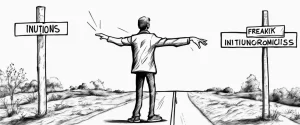
In a world facing unprecedented climate challenges, two prominent authors, McKenzie Funk and Bill Gates, delve into the complex realm of climate change in their respective works, “Windfall” and “How to Avoid a Climate Disaster.” In these thought-provoking books, both authors explore the urgent need for collective action to mitigate the growing risks associated with a changing climate. They analyze the multifaceted aspects of this global crisis, ranging from the political and economic dimensions to the technological solutions that could potentially reshape our future.
In “Windfall,” McKenzie Funk investigates the often overlooked consequences of climate change and explores the ways in which societies adapt, both resourcefully and destructively, to these environmental shifts. Through captivating storytelling and real-life case studies, Funk offers a unique perspective on the individuals and communities directly affected by climate change, while highlighting the immense complications that arise from this complex issue.
On the other hand, Bill Gates, in his book “How to Avoid a Climate Disaster,” approaches the topic from a different angle, focusing on the pragmatic solutions and policy changes necessary to tackle climate change head-on. Gates draws on his expertise as a renowned entrepreneur and philanthropist, presenting a comprehensive roadmap for achieving global carbon neutrality. With a focus on innovation and investment, Gates explores the potential of emerging technologies, such as renewable energy and breakthroughs in agriculture, while emphasizing the importance of policy tools and government initiatives to drive systemic change.
While both books share the overarching goal of addressing the climate crisis, their approaches and perspectives differ significantly. Funk’s “Windfall” offers an intimate portrayal of the human stories impacted by climate change, shedding light on the social, economic, and cultural implications of our rapidly changing environment. Gates, in “How to Avoid a Climate Disaster,” takes a more analytical and policy-driven approach, guiding readers through a series of achievable goals and practical steps necessary to transition into a low-carbon future.
Amidst the urgency for global climate action, both Funk and Gates transform complex scientific concepts into accessible narratives, making their books compelling resources for readers seeking a deeper understanding of the climate crisis and potential solutions. By delving into these two contrasting works, this comparative study aims to explore the diverse perspectives within the climate change discourse, shedding light on the societal, political, technological, and philosophical dimensions of this pressing issue. Through this exploration, we hope to gain valuable insights and contribute to a broader conversation on climate change and its implications for our collective future.
Brief Summary of Two Books
Windfall by McKenzie Funk
“Windfall” by McKenzie Funk is a non-fiction book that explores the consequences of climate change on our planet’s resources and economies. The book investigates various industries and countries which are taking advantage of the changing climate to generate wealth, while also examining the shortsightedness and potential dangers associated with these practices.
Funk introduces us to individuals and organizations who have found innovative ways to profit from the changing climate, such as weather derivatives traders and entrepreneurs cashing in on “green” technologies. He uncovers how governments and corporations are manipulating natural resources, including water, agriculture, and land, to bolster their economies and secure their futures, regardless of the long-term impact on the environment.
Through his research and interviews, Funk highlights the imbalance of power and influence between those who are benefitting from climate change and those who are suffering its consequences. He brings attention to the consequences faced by marginalized communities, particularly in developing nations, whose livelihoods are threatened by rising sea levels, droughts, and extreme weather events.
“Winfall” warns of the potential risks and moral hazards that come with profiting from climate change without considering the broader implications. The book serves as a call to action, urging readers to confront the ethical questions raised by these practices and pushing for a more sustainable and equitable approach to addressing climate change.
Overall, “Windfall” offers a thought-provoking analysis of the intersecting forces of climate change, economics, and human behavior, shedding light on the complex dynamics and ethical dilemmas at play in a world where profit is increasingly tied to our changing climate.
How to Avoid a Climate Disaster by Bill Gates
“How to Avoid a Climate Disaster” by Bill Gates is an insightful and comprehensive book that offers an urgent and practical plan to prevent a climate catastrophe. Drawing on his expertise as a technologist, business leader, and climate advocate, Gates presents a clear and compelling analysis of the current challenges and potential solutions surrounding climate change.
Gates begins by explaining the profound impact of carbon emissions on the planet’s climate and highlights the seriousness and urgency of the issue. He then presents a framework for understanding the sources of greenhouse gas emissions and identifies the key sectors that need to be addressed, including electricity, manufacturing, transportation, agriculture, and buildings.
The book delves into specific solutions for each sector, emphasizing the need for innovation and technological breakthroughs. Gates explores the importance of renewable energy sources like wind and solar power, while recognizing the limitations and intermittency issues of these technologies. He also stresses the need for a clean electrical grid and outlines the potential of advanced nuclear power and carbon capture and storage (CCS) technologies.
Furthermore, Gates acknowledges the significance of transforming transportation systems, particularly the need for electric vehicles and advanced biofuels, as well as the importance of sustainable agriculture practices and the necessity of finding alternatives to carbon-intensive materials in manufacturing.
One of the book’s central themes is the need for policies and incentives that encourage innovation and deployment of clean technologies. Gates highlights the importance of the public and private sectors collaborating to drive transformative change and outlines potential policy approaches, including carbon pricing and government investment in research and development.
Overall, “How to Avoid a Climate Disaster” provides readers with an essential understanding of the climate crisis and offers a pragmatic roadmap for reducing greenhouse gas emissions to zero in order to avoid catastrophic consequences. Gates combines his deep knowledge, scientific research, and actionable solutions to inspire readers to take immediate and collective action to save our planet.
Comparison between Two Books

Similarities in futurism
In both “Windfall” by McKenzie Funk and “How to Avoid a Climate Disaster” by Bill Gates, the authors explore futurism in relation to the pressing issue of climate change. Though their focuses may differ – with Funk providing a narrative on the potential beneficiaries of climate change while Gates focuses on solutions – there are notable similarities in their approach to envisioning the future.
1. Recognition of Climate Change Impacts: Both books acknowledge the undeniable reality of climate change and the severe consequences it presents. They emphasize the urgent need to address the changing climate and its wide-ranging effects on society, ecosystems, and economies.
2. Examination of Adaptation and Resilience: Funk’s “Windfall” delves into the concept of adaptation and how individuals, communities, and even nations are preparing for the impacts of climate change. Similarly, Gates highlights the importance of building resilience in the face of a changing climate as part of his strategy to avoid a climate disaster. Both books explore the necessity of adapting to the challenges arising from climate change and the potential consequences of inaction.
3. A Global Perspective: Both authors adopt a global perspective and recognize the interconnectedness of climate change impacts. They shed light on the fact that the effects of climate change, although felt differently in various regions, have far-reaching consequences that transcend geographical boundaries and affect everyone. This global lens allows for a more comprehensive understanding of the challenges and potential solutions.
4. Technological Solutions: Gates, being a strong advocate for technological innovation, proposes various technological solutions to combat climate change throughout “How to Avoid a Climate Disaster.” Likewise, Funk touches upon the advancements in technology and alternative energy sources that are being utilized in the face of climate change. Both books emphasize the importance of embracing and investing in innovative technologies to minimize the impact of climate change and transition to a sustainable future.
5. Future Possibilities: Finally, both authors explore the potential future scenarios resulting from climate change and climate action. While Funk examines those who might benefit from the changing climate, Gates envisions a future where humanity successfully tackles climate change and achieves a zero-carbon world. Both books offer glimpses into the possible directions our future may take, stimulating critical thinking and encouraging proactive approaches to address climate change.
In summary, “Windfall” by McKenzie Funk and “How to Avoid a Climate Disaster” by Bill Gates, despite their different perspectives, converge in their considerations of futurism when addressing the urgent issue of climate change. Both authors recognize the reality of climate change, explore adaptation and resilience, adopt a global perspective, emphasize technology-driven solutions, and envision potential future scenarios. These similarities contribute to a broader understanding of the challenges, opportunities, and choices we face in shaping a sustainable future.
Divergences in futurism
“Windfall” by McKenzie Funk and “How to Avoid a Climate Disaster” by Bill Gates both delve into the urgent issue of climate change, but they approach it from different perspectives. While both books acknowledge the severity of the problem, their divergences become evident in their focus, purpose, and vision of the future.
In “Windfall,” McKenzie Funk explores the potential economic opportunities arising due to climate change. Funk examines various aspects, from Iceland’s plans to become a green energy powerhouse to the emergence of “carbon cowboys” in the United States, who profit from disasters like wildfires. The book provides a comprehensive view of the evolving industries and strategies that are capitalizing on the changing climate. Funk’s aim is to illustrate how climate change can be seen as a potential windfall for certain individuals and industries. This perspective emphasizes the reality that climate change could materialize into economic benefits for some, even as it aggravates existing environmental issues.
On the other hand, “How to Avoid a Climate Disaster” by Bill Gates adopts a different approach. Gates, known for his expertise in technology and philanthropy, focuses on solutions to mitigate climate change. He presents a detailed plan with practical and technologically driven steps to achieve net-zero carbon emissions. Gates emphasizes the need for innovation and collaboration across multiple sectors, including energy, agriculture, transportation, and more, to prevent a climate disaster. His book is designed to take readers beyond understanding the consequences of climate change, encouraging them to take active steps to avoid it altogether.
The divergence in futurism between these books lies in the scope of their visions. In “Windfall,” Funk illustrates the potential future where certain groups or industries may reap economic benefits from climate change. The underlying assumption is that climate change is inevitable, and some individuals can exploit the situation for their gain. This perspective challenges conventional notions of negative impacts and catastrophes associated with climate change, instead highlighting the potential for economic opportunities within a changing world.
Conversely, Gates’s “How to Avoid a Climate Disaster” envisions a future where humanity collectively works towards avoiding the looming disaster. Gates sees a path forward through technological advancements, innovation, and effective policy interventions. He emphasizes the urgency of investing in sustainable and clean technologies to achieve carbon neutrality and highlights the consequences of inaction if we fail to address climate change. Gates’s vision is one of hope and determination, where global cooperation and innovation can redirect the trajectory of the planet and avert a climate catastrophe.
In conclusion, while both “Windfall” and “How to Avoid a Climate Disaster” contribute to the discourse on climate change, they diverge in their futurism. “Windfall” focuses on the potential economic opportunities that can arise from climate change, challenging traditional narratives of catastrophe, while “How to Avoid a Climate Disaster” is more solution-oriented, offering a detailed roadmap to prevent a climate catastrophe through innovation and collaboration. Both perspectives contribute to our understanding of the future impacts and potential pathways in the face of climate change.

Conclusion
Both books, Windfall by McKenzie Funk and How to Avoid a Climate Disaster by Bill Gates, offer valuable insights on climate change and its implications. However, the choice of which book is more worthy of reading ultimately depends on your specific interests and preferences.
If you are looking for a book that explores the diverse impacts of climate change and delves into real-life stories of adaptation, resilience, and exploitation, Windfall by McKenzie Funk may be the better choice. Funk travels the globe, documenting how individuals, governments, and corporations are responding to climate change, often in unexpected ways. This book exposes the economic opportunities that arise from climate change but also highlights the human costs and environmental consequences.
On the other hand, if you prefer a book written by an influential figure in the tech and environmental sustainability sectors, How to Avoid a Climate Disaster by Bill Gates might be more appealing. Gates offers a comprehensive analysis of the world’s carbon emissions and presents a detailed plan outlining strategies to mitigate climate change. This book provides insights into innovative technological solutions and policy approaches that can help us transition towards a carbon-neutral future.
Ultimately, the decision between Windfall and How to Avoid a Climate Disaster depends on what type of approach resonates with you more: a narrative-driven exploration of climate change’s complex effects (Windfall) or a data-driven and solution-oriented book (How to Avoid a Climate Disaster). Consider your personal interests and goals when selecting which book to read.


